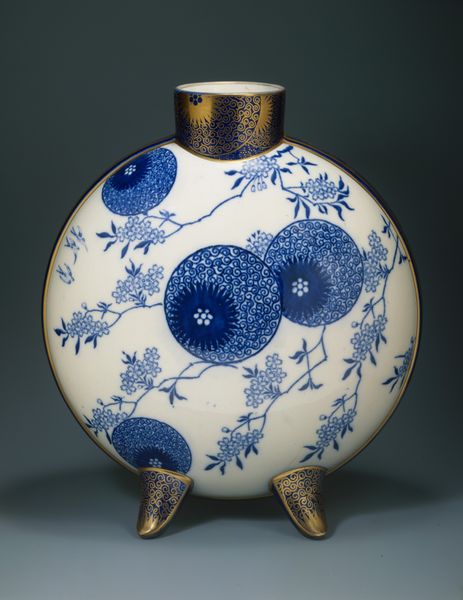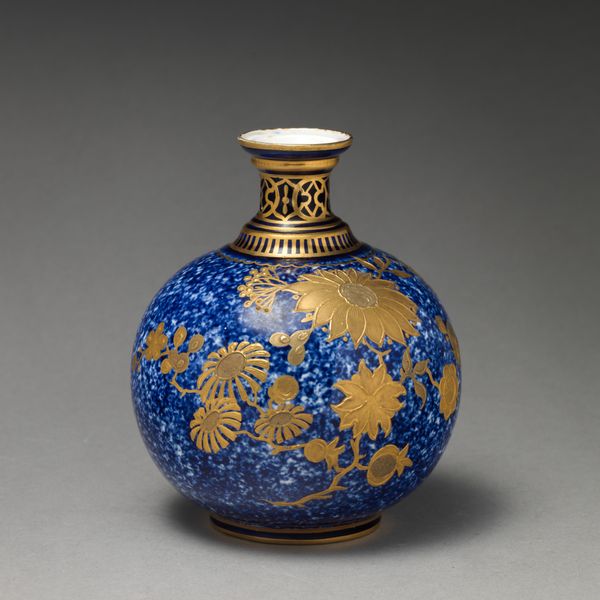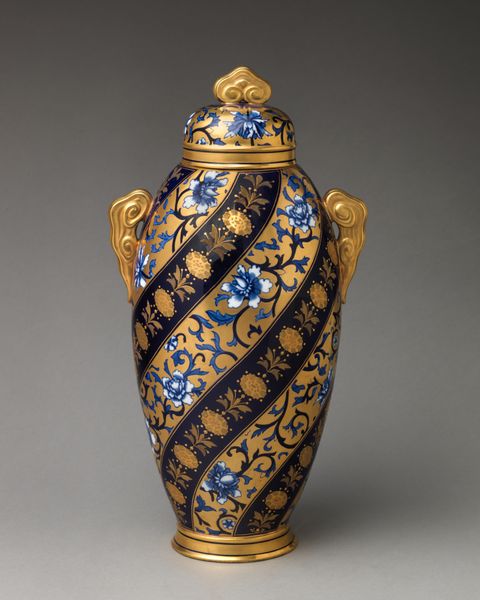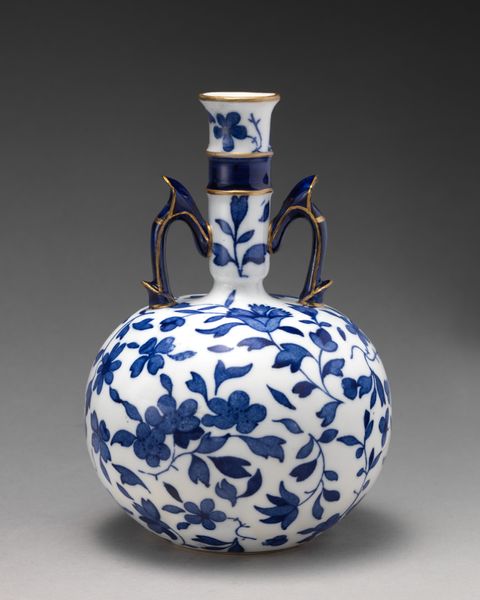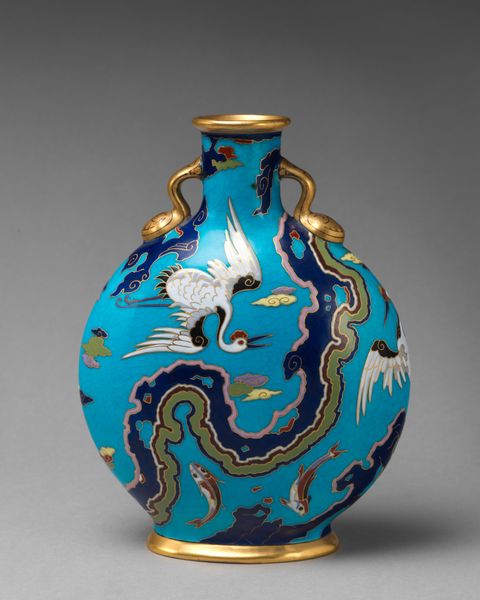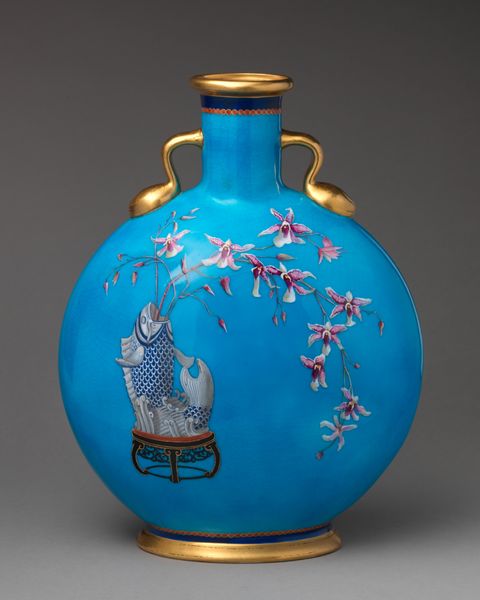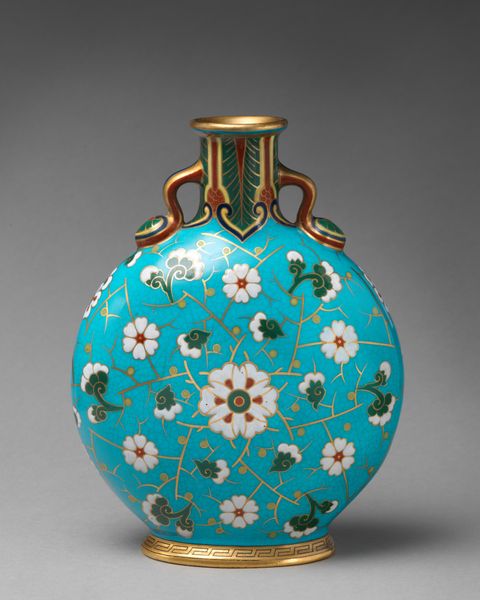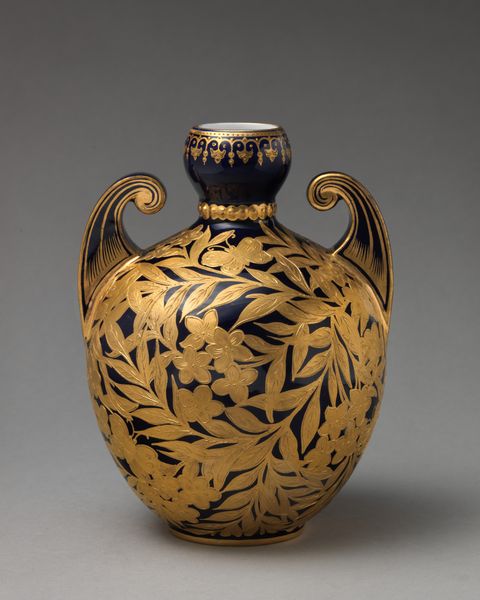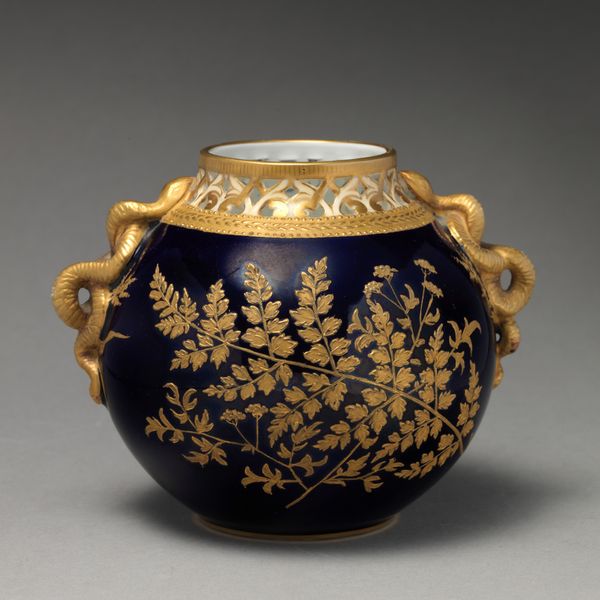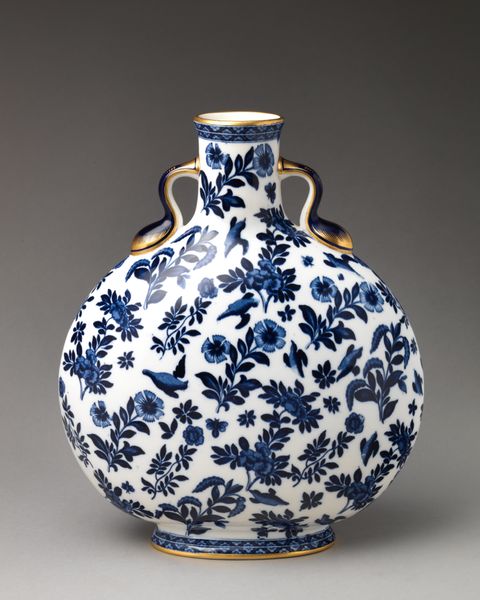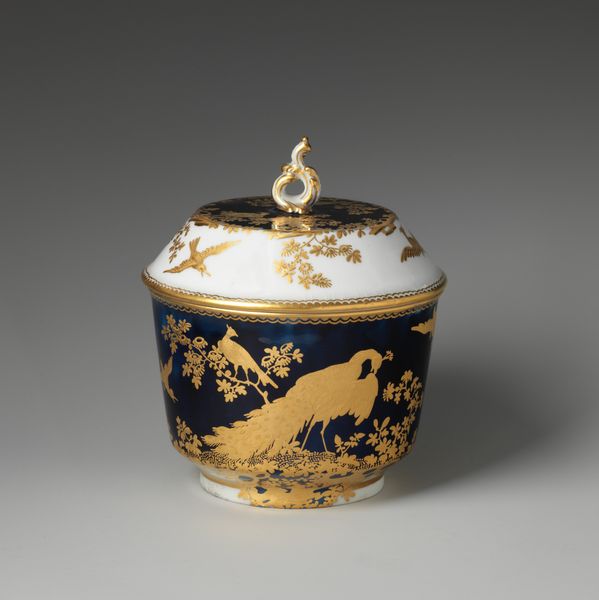
ceramic, porcelain, sculpture
#
decorative element
#
asian-art
#
ceramic
#
porcelain
#
sculpture
#
ceramic
#
decorative-art
Dimensions: confirmed: 11 7/8 × 10 1/2 × 5 1/4 in., 4.4 lb. (30.2 × 26.7 × 13.3 cm, 2 kg)
Copyright: Public Domain
Curator: At first glance, the cool blues and warm golds evoke such a tranquil yet opulent feel. I’m drawn in by the contrasting yet harmonious color palette. Editor: Let's consider this intriguing piece of decorative art: a porcelain moon flask, crafted by the Doulton Manufactory sometime between 1873 and 1887. What we observe is not just a vessel, but an object saturated with layered histories. Curator: Absolutely. Visually, I notice how the traditional Asian ceramic form interacts with a very Western aesthetic, which makes me think about power dynamics and cultural exchange in the decorative arts of that time. Editor: Indeed, the floral motifs and circular patterns are symbolic echoes. The blue designs might reference traditional Chinese blue-and-white porcelain, associating the piece with notions of luxury, status, and global trade routes. We see the re-interpretation of visual symbols that evoke a cultural memory of the British Empire. Curator: I agree. There's an almost brazen quality to taking those historical motifs and reworking them in a way that showcases British craftsmanship, or what was thought of it. It feels almost like a cultural reclamation. Do you sense that tension? Editor: The tension is definitely there. Looking at those precisely placed, small golden “medallions” that punctuate the piece and the golden ring that holds the top. They're functioning as accents and disrupt the naturalism suggested by the botanical painting. The medallions present these repetitive symbolic flowers, maybe like the controlled imposition of decoration over a natural and less symmetrical world. Curator: What I'm struck by is its capacity to function on various social and artistic planes. As an item made in an increasingly industrial world, the ceramic hints to both the access afforded and labor exploited to provide it, a stark contradiction to this kind of beauty. Editor: An excellent point. The moon flask stands as a beautiful enigma, prompting discussions on empire, industrialisation, cultural appropriation, but mostly on how artists translate history through persistent symbols and transformative design. Curator: Precisely, a testament to art’s potential for revealing so much about identity, influence and value.
Comments
No comments
Be the first to comment and join the conversation on the ultimate creative platform.
